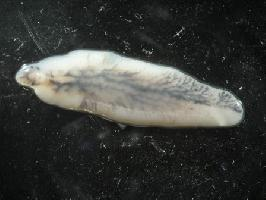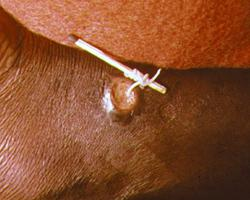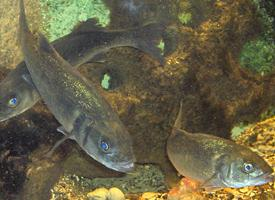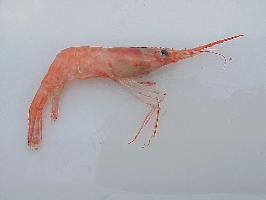
Greutăți și măsuri
| Lungime | de la 2 la 3 cm |
|---|
Starea de conservare
| Neînfricat |
Descrierea animalului
The Common liver fluke, scientifically known as Fasciola hepatica, is a parasitic flatworm belonging to the class Trematoda within the phylum Platyhelminthes. This parasitic species is notorious for its ability to infect the livers of various mammals, including humans, cattle, and sheep, causing a disease known as fascioliasis. Fasciola hepatica has a complex life cycle that requires two hosts to complete: a primary mammalian host where the adult fluke resides in the liver and bile ducts, and an intermediate host, usually a freshwater snail of the genus Galba or Lymnaea, where several asexual reproductive stages occur.Morphologically, adult Fasciola hepatica flukes are leaf-shaped, flat, and can grow up to 30 mm in length and 13 mm in width. They have a distinct cone-shaped anterior end and a broader posterior end. The body is covered by a tegument, which is an external surface layer that protects the fluke from the host's digestive enzymes and immune responses. The tegument also aids in nutrient absorption. The fluke's body color can range from a pale pink to a dark reddish-brown, depending on its diet and the host's bile.
Fasciola hepatica has a complex digestive system starting with a mouth located at the anterior end, leading into a muscular pharynx, and then bifurcating into two blind-ending caeca. Unlike most animals, flukes do not have an anus, and undigested waste is expelled through the mouth. The reproductive system of the fluke is hermaphroditic, meaning each individual possesses both male and female reproductive organs, allowing for self-fertilization. However, cross-fertilization between individuals is common and beneficial for genetic diversity.
The life cycle of Fasciola hepatica begins with the adult fluke laying eggs that are expelled into the environment via the host's feces. Once in freshwater, the eggs hatch into free-swimming larvae (miracidia) that must find and penetrate a suitable snail host within a few hours to survive. Within the snail, the miracidia transform into sporocysts, then into rediae, and finally into cercariae, another free-swimming larval stage. The cercariae leave the snail and encyst as metacercariae on aquatic vegetation or other surfaces. When the infected vegetation is ingested by a mammalian host, the metacercariae excyst in the duodenum, migrate through the intestinal wall, the peritoneal cavity, and eventually into the liver, where they mature into adult flukes, completing the life cycle.
Fascioliasis caused by Fasciola hepatica can lead to significant economic losses in the livestock industry due to reduced productivity in infected animals. In humans, the infection can cause a wide range of symptoms, from mild to severe, including fever, abdominal pain, jaundice, and in chronic cases, liver fibrosis. Control and prevention strategies focus on reducing the snail population, avoiding ingestion of contaminated water or vegetation, and treating infected hosts with anthelmintic drugs.
In summary, Fasciola hepatica is a fascinating yet dangerous parasitic flatworm with a complex life cycle intricately linked to environmental and host factors. Its ability to infect a wide range of mammals and cause significant health and economic impacts makes it a parasite of major concern in both human and veterinary medicine.
Animale similare
Fotografii noi cu animale
Top 10 animale
- Dolphin gull (Leucophaeus scoresbii)
- Diana monkey (Cercopithecus diana)
- Moustached guenon (Cercopithecus cephus)
- Galápagos tortoise (Geochelone nigra complex)
- Stone loach (Barbatula barbatula)
- Japanese macaque (Macaca fuscata)
- Russian tortoise (Testudo horsfieldii)
- Greek tortoise (Testudo graeca)
- Common flying dragon (Draco volans)
- Vendace (Coregonus albula)


